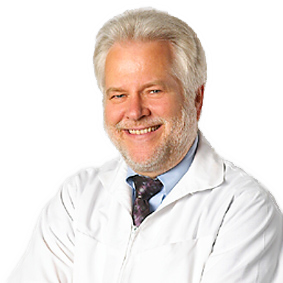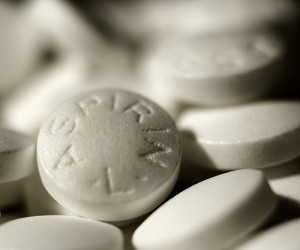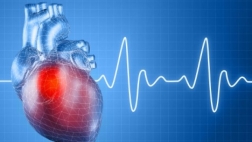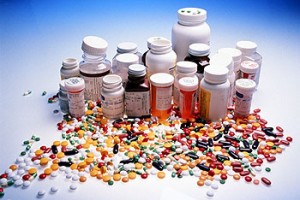The Diet-Heart Myth: Statins Don’t Save Lives when you look at the true stats
In this article, I will debunk the myth that statin drugs save lives in healthy people without heart disease, and discuss some of the little known side effects and risks associated with these drugs.
Myth: Statins save lives in healthy people without heart disease
Statins have been hailed by many in the conventional medical establishment as wonder drugs, with some physicians going as far as suggesting they should be added to the water supply. (The doctor that made that particular suggestion is named John Reckless – I kid you not.) But are statins really the wonder drugs they’ve been made out to be?
Are statins really the wonder drugs they’ve been made out to be?
Before we dive into the statistics on statins, I need to briefly explain the difference between relative and absolute risk reduction. Researchers and pharmaceutical companies often use relative risk statistics to report the results of drug studies. For example, they might say “in this trial, statins reduced the risk of a heart attack by 30%”. But what they may not tell you is that the actual risk of having a heart attack went from 0.5% to 0.35%. In other words, before you took the drug you had a 1 in 200 chance of having a heart attack; after taking the drug you have a 1 in 285 chance of having a heart attack. That’s not nearly as impressive as using the 30% relative risk number, but it provides a more accurate picture of what the actual, or “absolute” risk reduction is.
With that in mind, let’s take a closer look at the efficacy of statins in two broad groups of people: those with pre-existing heart disease, and those without pre-existing heart disease. In the medical literature, these groups are referred to as “secondary prevention” and “primary prevention”, respectively.
Secondary prevention (those with pre-existing heart disease)
Absolute risk reductions range from 0.8% in MIRACL on the low end to 9% in 4S on the high end, with an average of 3%.
An analysis by Dr. David Newman in 2010 which drew on large meta-analyses of statins found that among those with pre-existing heart disease that took statins for 5 years (1):
- 96% saw no benefit at all
- 1.2% (1 in 83) had their lifespan extended (were saved from a fatal heart attack)
- 2.6% (1 in 39) were helped by preventing a repeat heart attack
- 0.8% (1 in 125) were helped by preventing a stroke
- 0.6% (1 in 167) were harmed by developing diabetes
- 10% (1 in 10) were harmed by muscle damage
Primary prevention (those without pre-existing heart disease)
Statins do reduce the risk of cardiovascular events in people without pre-existing heart disease. However, this effect is more modest than most people assume. Dr. Newman also analyzed the effect of statins given to people with no known heart disease for 5 years (5):
- 98% saw no benefit at all
- 1.6% (1 in 60) were helped by preventing a heart attack
- 0.4% (1 in 268) were helped by preventing a stroke
- 1.5% (1 in 67) were harmed by developing diabetes
- 10% (1 in 10) were harmed by muscle damage
These statistics present a more sobering view on the efficacy of statins in people without pre-existing heart disease. They suggest that you’d need to treat 60 people for 5 years to prevent a single heart attack, or 268 people for 5 years to prevent a single stroke. These somewhat unimpressive benefits must also be weighed against the downsides of therapy, such as side effects and cost. During that hypothetical 5 year period, 1 in 67 patients would have developed diabetes and 1 in 10 patients would have developed muscle damage (which can be permanent in some cases, as we’ll see later in this section).
In addition, while statins do moderately reduce cardiovascular events such as heart attack in people without heart disease, they’ve never been shown to extend lifespan in this population. This is true even when the risk of heart disease is high. In a large meta-analysis of 11 randomized controlled trials by Kausik Ray, MD and colleagues published in the Archives of Internal Medicine, statins were not associated with a significant reduction in the risk of death from all causes. (6)
This trial included 65,000 people without pre-existing heart disease but with intermediate to high risk of heart disease. It was important because it was the first review that only included participants without known heart disease. Previous studies suggesting that statins are effective in reducing death in people without pre-existing heart disease included some people that did have heart disease, which would have skewed the results.
The lack of significant effect on mortality is even more interesting in light of the fact that LDL cholesterol levels did decrease significantly in the statin group; the average LDL level in those taking placebo was 134 mg/dL and the average in the statin-treated patients was 94 mg/dL—roughly 30% lower. Yet in spite of this marked reduction in LDL cholesterol in the statin group, there was no difference in lifespan between the two groups. This is yet another line of evidence suggesting that the amount of cholesterol in LDL particles is not the driving factor in heart disease.
A meta-analysis of statin trials in people without heart disease by the prestigious Cochrane Collaboration came to a similar conclusion. (7) They also observed that all but one of the clinical trials providing evidence on this issue were sponsored by the pharmaceutical industry. This is significant because research clearly indicates that industry-sponsored trials are more likely than non-industry-sponsored trials to report favorable results for drugs because of biased reporting, biased interpretation, or both. (8)
Adverse effects of statins
If statins were harmless and free, then it wouldn’t matter how many people need to be treated to prevent a heart attack or extend someone’s lifespan. But statins are not free, nor are they harmless. Statin use has been associated with a wide range of side effects, including myopathy (muscle pain), liver damage, cataracts, kidney failure, cognitive impairment, impotence and diabetes.
Unfortunately, studies show that physicians are more likely to deny than affirm the possibility of statin side effects, even for symptoms with strong evidence in the scientific literature. (9) Assuming that physicians would likely not report the adverse reaction in these circumstances, it’s probable that the incidence of statin side effects is much higher than the reported rates.
One of the most troubling side effects of statins that has only recently become apparent is their potential to increase the risk of diabetes, especially in women. A study by Dr. Naveed Sattar and colleagues published in The Lancet in 2010 examined 13 randomized clinical trials involving over 90,000 patients taking statins. They found that statin use was associated with a 9% increased risk in developing diabetes. Note that this is a relative risk, so the absolute risk of developing diabetes while taking a statin is very low. That said, observational data from the Women’s Health Initiative found a 48% increased risk of diabetes in healthy women taking statins after adjusting for other risk factors. (10)








